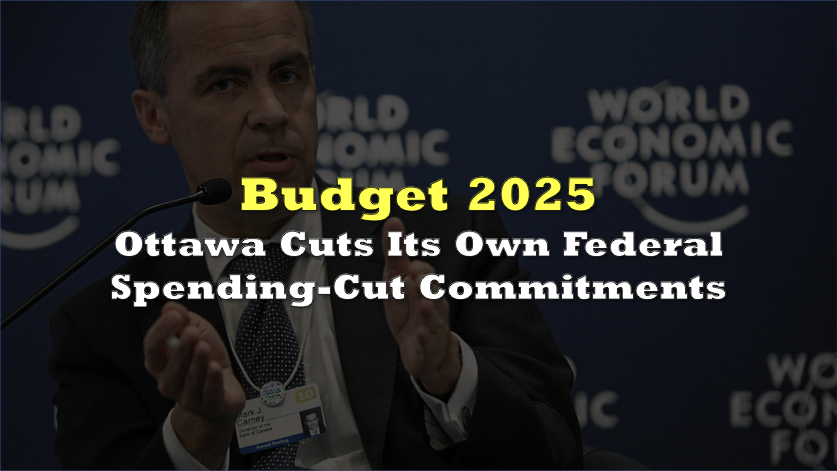The Carney government has already softened its signature restraint plan, reducing savings targets for eight departments that were slated to deliver 15% in program cuts over three years and shifting them onto the much lighter reduction track in the federal budget.
Crown-Indigenous Relations, Indigenous Services, and Women and Gender Equality will now face only 2% reductions. The same treatment is being extended to three major research councils — NSERC, SSHRC and CIHR — along with CSIS and the Communications Security Establishment. They join National Defence, the RCMP, and the Canada Border Services Agency, which were already exempted from deeper cuts earlier in the year.
The adjustment follows sustained pushback from equity groups, concerns about unintended cuts to First Nations services and warnings from economists that the original design was unworkable.
Carney looking more and more like Trudeau everyday.
— HoCStaffer (@HoCStaffer) November 12, 2025
Look what departments don't have to find 15% savings anymore: pic.twitter.com/aTPECrGRWm
Finance spokesperson Benoit Mayrand said the lowered targets reflect the need to attract research talent and to support reconciliation and gender and LGBTQ+ rights.
Economist David Macdonald of the Canadian Centre for Policy Alternatives said the new exemptions largely target transfer-heavy departments and granting councils, who operate minimally but move a lot of federal funds.
“You could not avoid cuts to those end users,” he said. “You would end up with very perverse outcomes like elementary school funding on First Nations being cut.”
He added that easing up on Women and Gender Equality appears driven by fall pushback from women’s and LGBTQ+ groups.
Macdonald also noted that adding CSIS and CSE to the 2% list is “odd,” arguing they should have been grouped with defence and security agencies from the start.
On this developing and shifting list of exemptions, Macdonald said this shows the review is still evolving and may continue to adjust as program-level implications become clearer.
“I do not think it was well thought through,” he said. “I do not think any of this is a particularly good idea.”
Former Privy Council clerk Michael Wernick questioned why intelligence budgets are being cut at all, pointing out that some of the 2%-target organizations “have nothing to spend on except their salary budgets and a little bit of IT,” which limits the scope for savings without reducing capability.
Despite the early retreat, the federal budget continues to advertise a restraint plan built on “restructuring operations,” internal service consolidation and workforce adjustment to bring staffing to a “sustainable level.” Ministers were initially instructed to find 7.5% savings in year one, 10% in year two, and 15% by 2028-29, a sequence Desjardins estimated at roughly $15 billion, $20 billion, and $30 billion.
Hints of where real cuts may land appear in the budget annex. Agriculture and Agri-Food Canada plans to wind down non-core programs such as the Agricultural Climate Solution Living Labs. The Canada Revenue Agency will shutter business units linked to the Digital Services Tax, the Federal Fuel Charge, and the Canada Carbon Rebate. The CBSA will extend vehicle fleet life from 7 to 10 years to delay capital costs.
Wernick warned the “real crunch” will arrive halfway through next fiscal year when departments test whether they can stay within the new caps.
Information for this briefing was found via National Newswatch and the sources mentioned. The author has no securities or affiliations related to the organizations discussed. Not a recommendation to buy or sell. Always do additional research and consult a professional before purchasing a security. The author holds no licenses.









